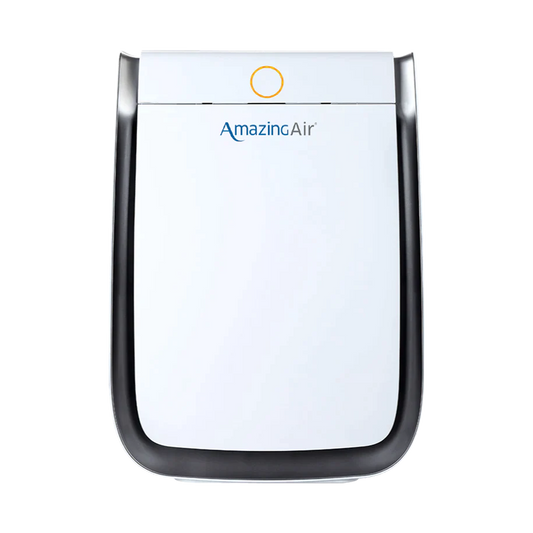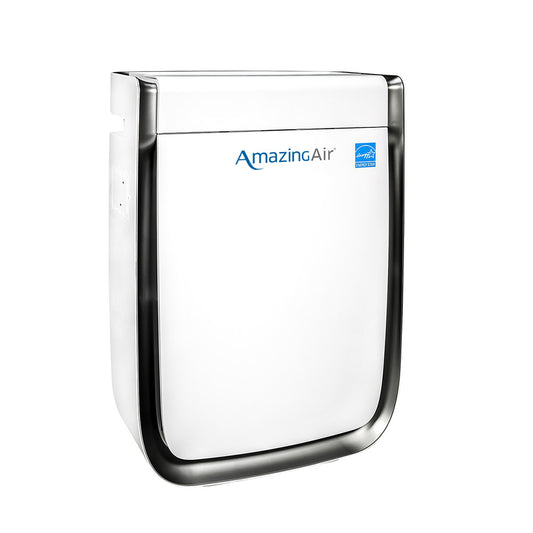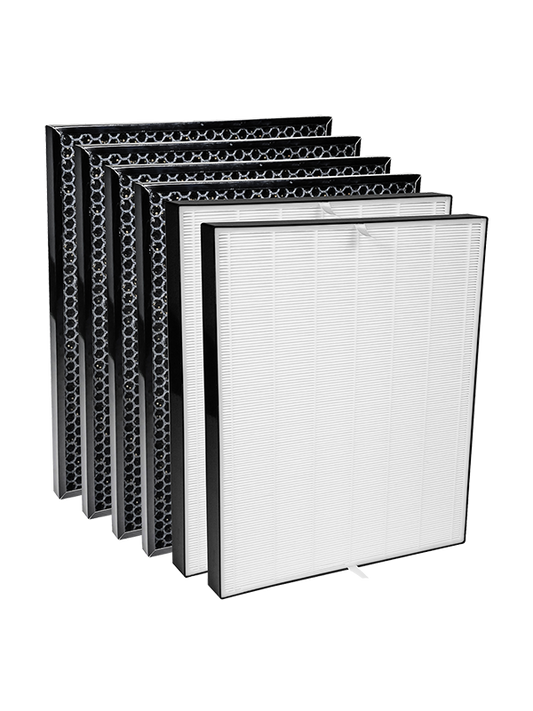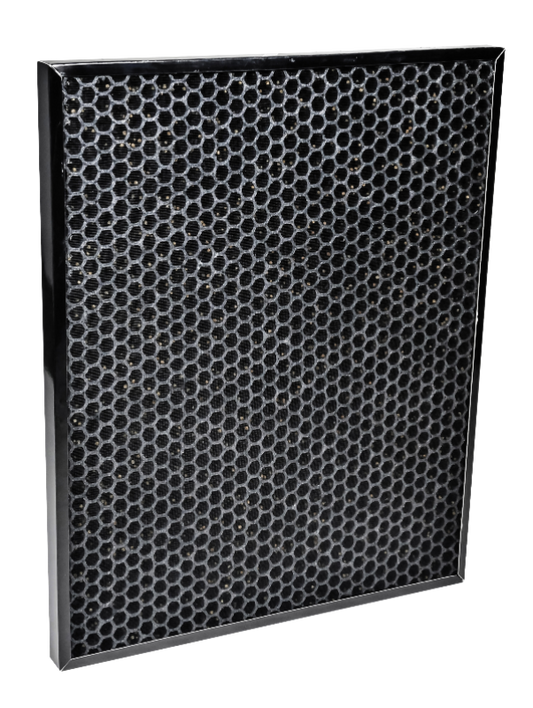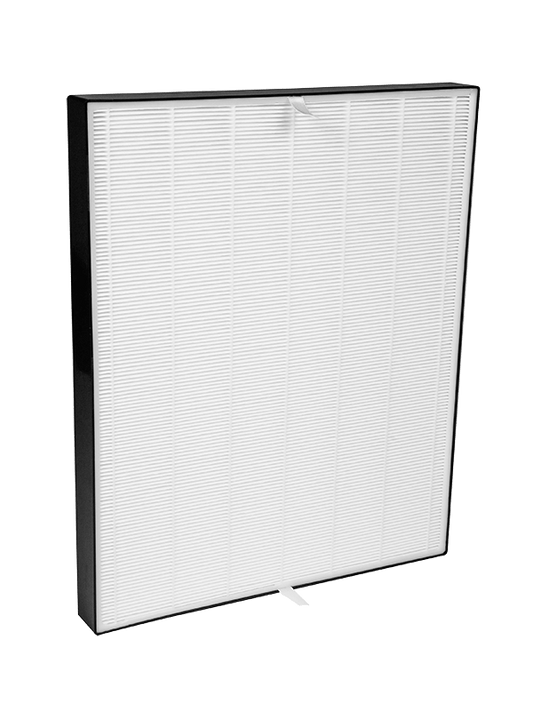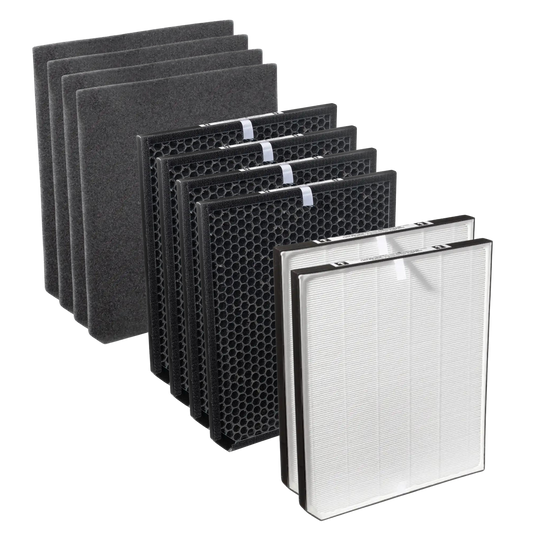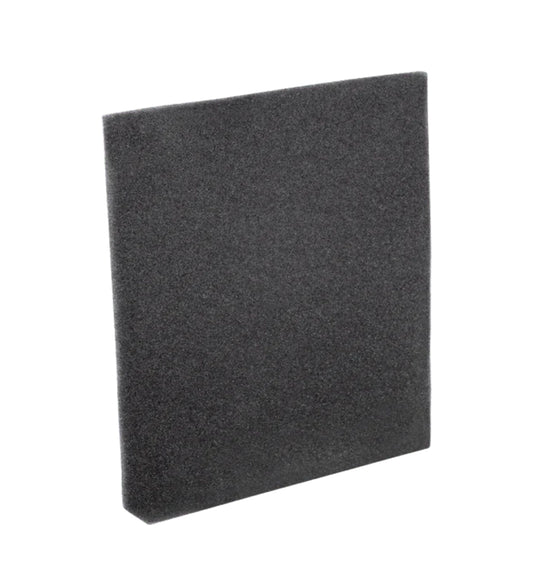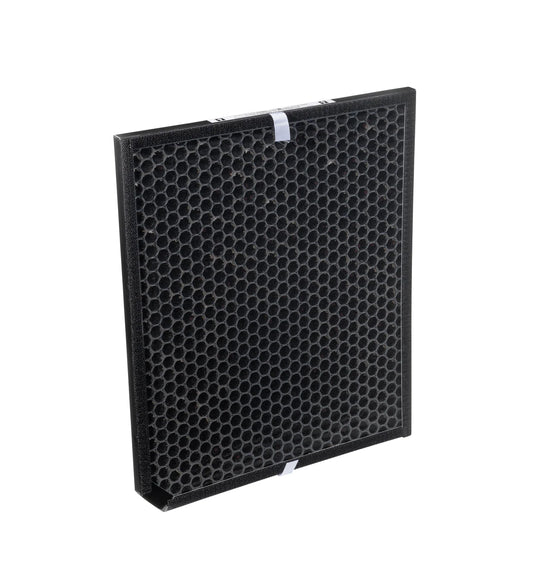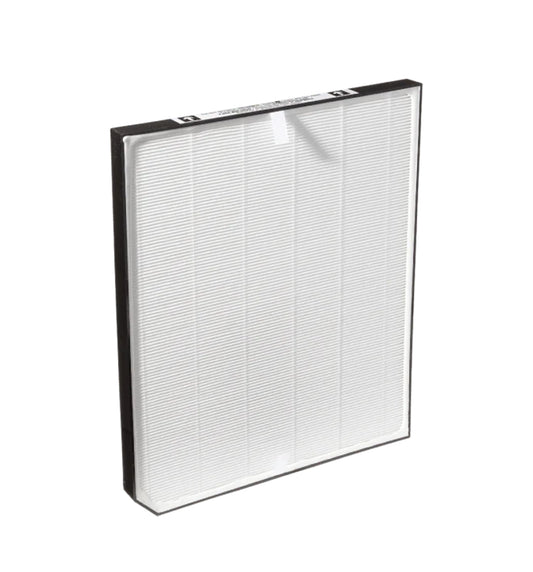Air pollution such as particulate matter is known to have an effect on our health. Long-term exposure to particulate matter, indoors and out, increases the risk of respiratory or cardiovascular diseases. In the meantime, more and more is known about the relationship between particulate matter and respiratory diseases as a result of transmissible viral infections. For a long time, airborne transmission was not thought to be the primary route of infection of COVID-19. There is now increasing evidence to say that the virus is transmitted via aerosols. This risk is significantly greater in indoor spaces than outdoors.
What does this mean for the spread of COVID-19? And does a relationship between particulate matter and the extent to which someone experiences serious effects from COVID-19 exist? More studies give us clarity on this topic, which we will explore further below.

The relationship between air pollution and life expectancy
Air pollution has long been proven to have an impact on various non-communicable diseases, such as heart and lung diseases. The Environmental Research Group at the School of Public Health in London consists of 68 air quality researchers. At the beginning of 2021, they published a report1 on the relationship between air pollution, health and life expectancy. It explains that new-borns in London have been shown to live six months longer if air pollution were maintained at 2013 levels, which were significantly lower than emissions today. If London meets the WHO's 2005 particulate matter guidelines by 2030, this would increase life expectancy by 20% for the next twenty years. However, this improvement requires a significant investment in healthier air quality for Londoners to gain the full benefit.
The relationship between particulate matter and COVID-19
The role of air pollution in transmissible infectious respiratory diseases has long been unclear and even underestimated. When COVID-19, a virus that can infect the upper and lower respiratory tract, broke out worldwide and caused a pandemic, these questions quickly arose: does air pollution increase the chance of getting COVID-19 and if you catch it, is there a bigger chance of getting severe COVID-19 with long-term exposure to air pollution? Recently, a new report2,3 from the Environmental Research Group appeared in which they, together with the Medical Research Council Toxicology Unit at the University of Cambridge, explored these questions. The report describes a clear link between polluted air and severe cases of COVID-19 and provides an overview of studies with recent evidence for this.
Greater vulnerability to a severe course of a COVID-19 infection
Now that we are over 1.5 years into the pandemic, there is more and more good quality research. Something that requires time and care for a new virus such as SARS-CoV-2, the researchers said. A small number of good quality studies show that people with long-term exposure to air pollution before the pandemic were more likely to be hospitalized after being infected with COVID-19. This is not surprising, according to the researchers, as air pollution is already known to increase the risk of heart and lung disease; underlying conditions that make people more vulnerable to adverse effects of COVID-19. The relationship between long-term exposure to air pollution and the number of cases of COVID-19 is less consistent. However, indications have been found that exposure to air pollution increases the chance of contracting COVID-19. In animal studies, it was observed that inhaled pollutants in the lungs of animals increase the number of proteins that allow the coronavirus to attach to the lung cells. Finally, relations have been found between exposure to air pollution and a higher risk of hospitalization due to COVID-19.
Greater vulnerability to a severe course of a COVID-19 infection
Now that we are over 1.5 years into the pandemic, there is more and more good quality research. Something that requires time and care for a new virus such as SARS-CoV-2, the researchers said. A small number of good quality studies show that people with long-term exposure to air pollution before the pandemic were more likely to be hospitalized after being infected with COVID-19. This is not surprising, according to the researchers, as air pollution is already known to increase the risk of heart and lung disease; underlying conditions that make people more vulnerable to adverse effects of COVID-19. The relationship between long-term exposure to air pollution and the number of cases of COVID-19 is less consistent. However, indications have been found that exposure to air pollution increases the chance of contracting COVID-19. In animal studies, it was observed that inhaled pollutants in the lungs of animals increase the number of proteins that allow the coronavirus to attach to the lung cells. Finally, relations have been found between exposure to air pollution and a higher risk of hospitalization due to COVID-19.
The effects of PM2.5 on the death rate from COVID-19
Also, a nationwide study4 in the United States on the relation between long-term exposure to particulate matter (PM2.5) and death rates from COVID-19 shows that a small increase in long-term exposure to PM2.5 leads to a large increase in the death rate from COVID-19. PM2.5 stands for particulate matter and 2.5 stands for the smaller particles in the air with a size of up to 2.5 micrometres. These particles are released, for example, during industrial processes and combustion, but also by motorized traffic. It is the PM2.5 particles that end up deep in the lungs. As possible underlying mechanisms of this relation between PM2.5 and COVID-19 mortality reference is made to previous research. This shows that exposure to PM2.5 affects cardiovascular and respiratory diseases; risk factors that increase the risk of hospitalization and death in COVID-19 patients. It is also believed that there is a relationship between these conditions, inflammation and cellular damage related to long-term inhaled PM2.5. Finally, previous research also suggests that exposure to air pollution can suppress an early immune response to infection, leading to a later increase in inflammation and a poorer prognosis.
The spread of COVID-19 through aerosols
Since the start of the pandemic, the narrative of the spread of COVID-19 has been a subject of debate. In the meantime, there is an increasing burden of proof for airborne transmission and not only via larger droplets within 1.5 meters, but also, or perhaps especially, via the smaller droplets, the so-called aerosols. Catherine Noakes5, Professor of Environmental Engineering for Buildings at the University of Leeds in England, explains: “We breathe in as much as eight to ten litres of air per minute. If you multiply that by the number of people in a room, then we are constantly breathing each other's 'lung secretions'. The particles emitted when people breathe, talk or cough are of different sizes. It is the smallest particles, the aerosols, that are inhaled deepest into the lungs.” Aerosol scientist Lidia Morawska5, of the Queensland University of Technology, in Australia, says: “The air you exhale is forced through the moist passages of the lungs.Just as you spray a cloud of moisture into the air with a nebulizer or a bottle of perfume, the secretions from the lungs are atomized into the exhaled air into the room.”
What role does air filtering play in corona policy?
Aerosols containing viruses range on the order of 0.06 to 0.1 micrometres. If someone is infected with COVID-19, the virus is also exhaled via aerosols. Depending on the size of the particles, the number of particles in a room and the degree of ventilation, aerosols remain in a room for some time. This can vary from a few minutes to even a few hours. More countries are paying attention to healthy air quality in indoor spaces and regulations are being drawn up in the field of ventilation. Good practices in ventilation and purifying indoor air can play a vital role in reducing the spread of Covid-19 or other respiratory viruses and there are currently many air filter systems on the market to support this. The most well known are systems with HEPA filters. For example, airplanes often contain HEPA filters which are pretty sophisticated and filter out air particles down to a minimum size of 0.1 microns. There are now also air filters with UltraHEPA filters (H13) which filter particles in the air as small as 0.003 micrometres and can be used to purify the air at home, at the office or in any space where people meet. The extent to which UltraHEPA filters contribute to the reduction of COVID-19 and how they can best be used is currently being tested.

Attention to air quality is essential
While several researchers2,3,4 underline the need for more research into the relationship between air pollution and its effects on the severity of respiratory infections, such as COVID-19, the results of existing studies already support the importance of reducing air pollution through adequate regulation and through investing in proper ventilation and air filtration systems. If we don't do this, it is expected that not only will the number of COVID-19-related hospitalizations and deaths increase, but also more and more PM2.5-related illnesses will result in the general population which will put further strain on the already pressured healthcare system. Addressing pollution in outdoor and indoor air is therefore an important factor in reducing the population's vulnerability to COVID-19 and similar infections.
Do you have any questions? Please contact us via info@amazingair.eu or +31 6 49 536 820 (WhatsApp and/or phone). We are happy to help you!
Sources:
- Stewart, J., Evanson, D. (2021, January 25). Tackling London's air pollution will increase life expectancy of children. Imperial College London News. Retrieved 10 September 2021 from https://www.imperial.ac.uk/news/213273/tackling-londons-pollution-will-increase-life/
- Stewart, J. (2021, Sept. 6). Long-term air pollution linked to greater risk of COVID-19 hospitalisation. Imperial College London News. Retrieved 10 September 2021 from https://www.imperial.ac.uk/news/229233/long-term-pollution-linked-greater-risk-covid-19/
- Walton, H., Evangelopoulos, D., Kasdagli, M., Selley, L., Dajnak, D. & Katsouyanni, K. Investigating links between airpollution, COVID-19 and lowerrespiratory infectious diseases. Environmental Research Group, Imperial College London. Retrieved September 10, 2021, fromhttps://www.imperial.ac.uk/media/imperial-college/medicine/sph/environmental-research-group/ReportfinalAPCOVID19_v10.pdf
- Wu, X., Nethery, R. C. (2020) Exposure to air pollution and COVID-19 mortality in the United States: A nationwide cross-sectional study. Department of Biostatistics, Harvard T.H. Chan School of Public Health, Boston, USA
- Zhang, S. (2021). The Plan to Stop Every Respiratory Virus at Once. The benefits of ventilation reach far beyond the coronavirus. What if we stop taking colds and flus for granted, too? The Atlantic. Retrieved September 10, 2021, fromhttps://www.theatlantic.com/health/archive/2021/09/coronavirus-pandemic-ventilation-rethinking-air/620000/





